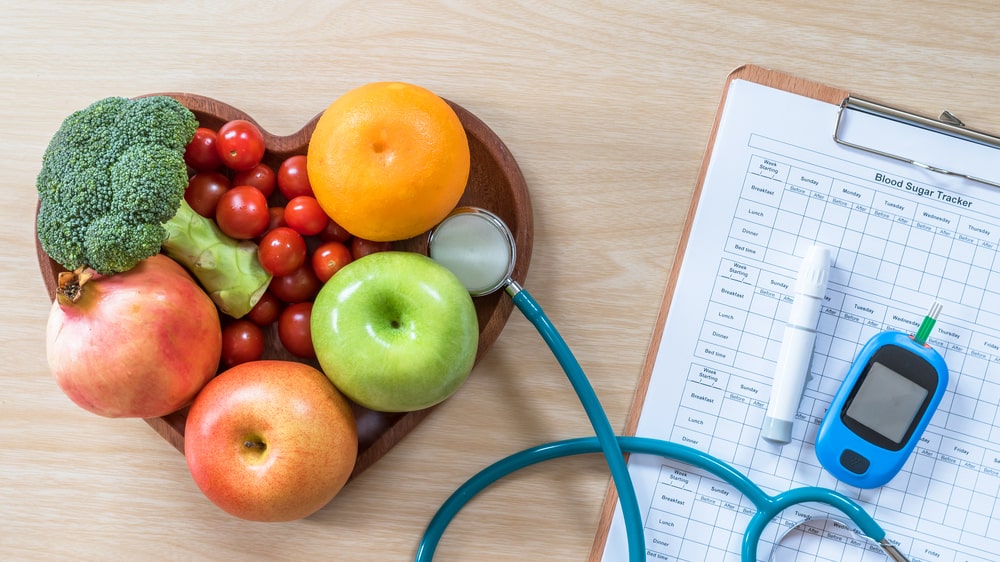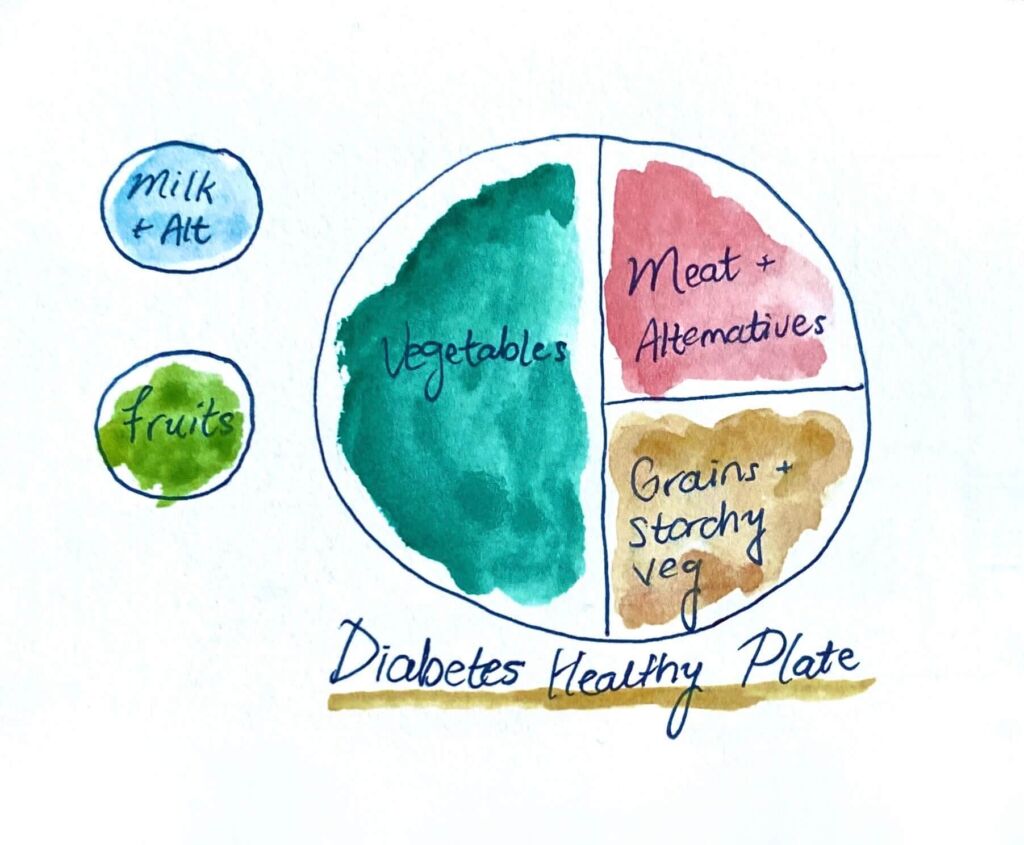7 Healthy Eating Tips for Diabetes
by Hannah Jackson

Healthy eating helps keep your blood sugar in your target range, which may help prevent diabetes or manage existing diabetes, slowing down the rate of development of diabetes complications.
Insulin is a hormone released from the pancreas after you eat which helps move glucose into your body’s cells to use as energy.
Diabetes is a condition in which the pancreas does not produce enough or any insulin and as a result, this leads to high blood glucose levels (hyperglycemia).
Types of Diabetes
Type I diabetes: The pancreas does not produce any insulin.
Type II diabetes: The pancreas does not produce enough insulin or the body is unable to utilize the insulin it does produce properly.
Gestational diabetes: Blood glucose levels above normal that occur during the second or third trimesters of pregnancy.
Secondary Diabetes: The loss of pancreatic function to produce insulin as a result of another disease.
Whether you have recently been diagnosed with diabetes or are just looking to learn how to prevent it, here are 7 quick and easy tips to help kickstart your healthy eating habits to manage your diabetes.
1. Use the Plate Method

When eating to manage diabetes, try to follow the Diabetes Healthy Plate.
Fill ¼ of your plate with meat and alternatives. This includes foods like meats, fish, and legumes. You will want to load another ¼ of your plate with whole grains and/or starchy vegetables.
When managing diabetes with nutrition, you will want to fill half of your plate with vegetables.
Round out your meal with a source of milk and alternatives and satisfy your sweet tooth with some fruit.
Using this method can help your spread carbohydrate intake throughout the day to maintain consistent blood glucose levels.
2. Plan Out Your Meals
For individuals with diabetes, timing your meals is an important component of keeping your blood sugars within normal levels. While the amount and timing of meals may be unique to you, try to eat three meals and up to three snacks per day.
Speaking with a Registered Dietitian can help you find what works best for you!
3. Use the Handy Portion Guide
When eating away from home, it can be challenging to use the plate method. But there is another way! It’s the handy portion guide!
- 1 portion of grains/starchy vegetables is about the size of your fist
- 1 portion of meat and alternatives is about the size of your palm
- 1 portion of vegetables is as much as you can hold in two cupped hands
- ***BONUS***Limits fats to about the size of the tip of your thumb
By using the handy portion guide, you can control portion sizes, helping to maintain normal blood sugar levels.
4. Focus on Fibre
For those without diabetes, it’s recommended that Canadian adults get 21-38 g of fibre per day depending on their gender and age. However, for those with diabetes, it is recommended to have 25-50 g of fibre each day.
Fibre helps maintain safe blood sugar levels, reduces cholesterol, keeps you fuller for longer, and improves regularity.
Examples of good sources of fibre include:
- Vegetables like green peas, and broccoli
- Fruit like apples and pears,
- Plant based proteins like beans and lentils, and hummus,
- Whole grains like oats,
- Bran cereal, and psyllium,
5. Understand the Glycemic Index
The glycemic index (GI) is a scale from 1 to 100 that ranks foods according to how much they raise your blood sugar level.
- Low GI: ≤ 55
- Medium GI: 59-69
- High: ≥ 70
For those with diabetes, choosing foods with a low GI more often can help to manage their diabetes.
Check out this resource from Diabetes Canada to discover foods in the low, medium, and high GI categories.
6. Replace Sugar with Artificial Sweeteners or Satisfy Your Sweet Tooth with Fruit
Unlike sugar, sugar alcohols and sugar substitutes have little to no effects on blood sugar levels while still providing a sweet taste to foods!
Examples of artificial sweeteners include Sweet ‘N Low ®, Truvia ®, Splenda ®, etc.
Speak with a Registered Dietitian if you are interested in using artificial sweeteners as part of your diabetes management to find the right one for you.
Another way to satisfy your sweet tooth is with fruit! While fruit contains a type of sugar called fructose that increases blood sugar levels, the fibre contained in fruit prevents a spike in your blood sugar levels.
7. Practice Carbohydrate Counting
Carbohydrate counting is relatively complex in comparison to other methods. However, it does promote an awareness regarding the number of carbohydrates consumed at each meal so they can be better spread throughout the day.
If you are interested in exploring carbohydrate counting as a way to manage diabetes, speak to a Registered Dietitian.
If you need help with the nutritional component of managing your diabetes, then check out our list of Registered Dietitians who practice diabetes and blood sugar concerns!
For more information about eating healthy with diabetes, check out these resources:
Alberta Health Services: Healthy Eating for Diabetes
Diabetes Canada: Glycemic Index Food Guide
About the Author: Hannah Jackson is a third-year Dietetics student at the University of Alberta.
Reviewed by Lindsey McGregor, RD
The Site is not intended as a substitute for professional advice. Under no circumstances will we be liable for any loss or damage caused by your reliance on information obtained
through the Site. You are responsible for evaluating the accuracy, completeness, or usefulness of any information, opinion, advice, or other content available through the Site. Please seek the advice of professionals, as appropriate, regarding the evaluation of any specific information, opinion, advice, or other content. Never disregard professional advice, including medical advice, or delay in seeking it because of something you have read on this Site.



